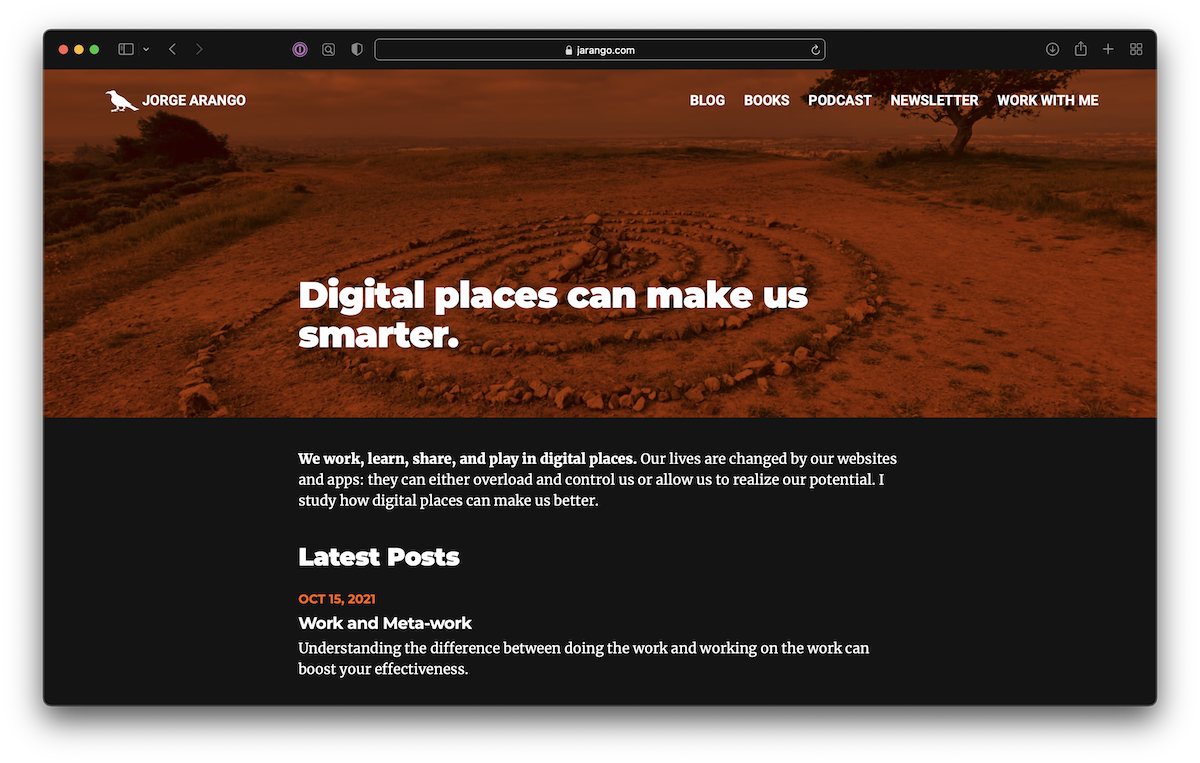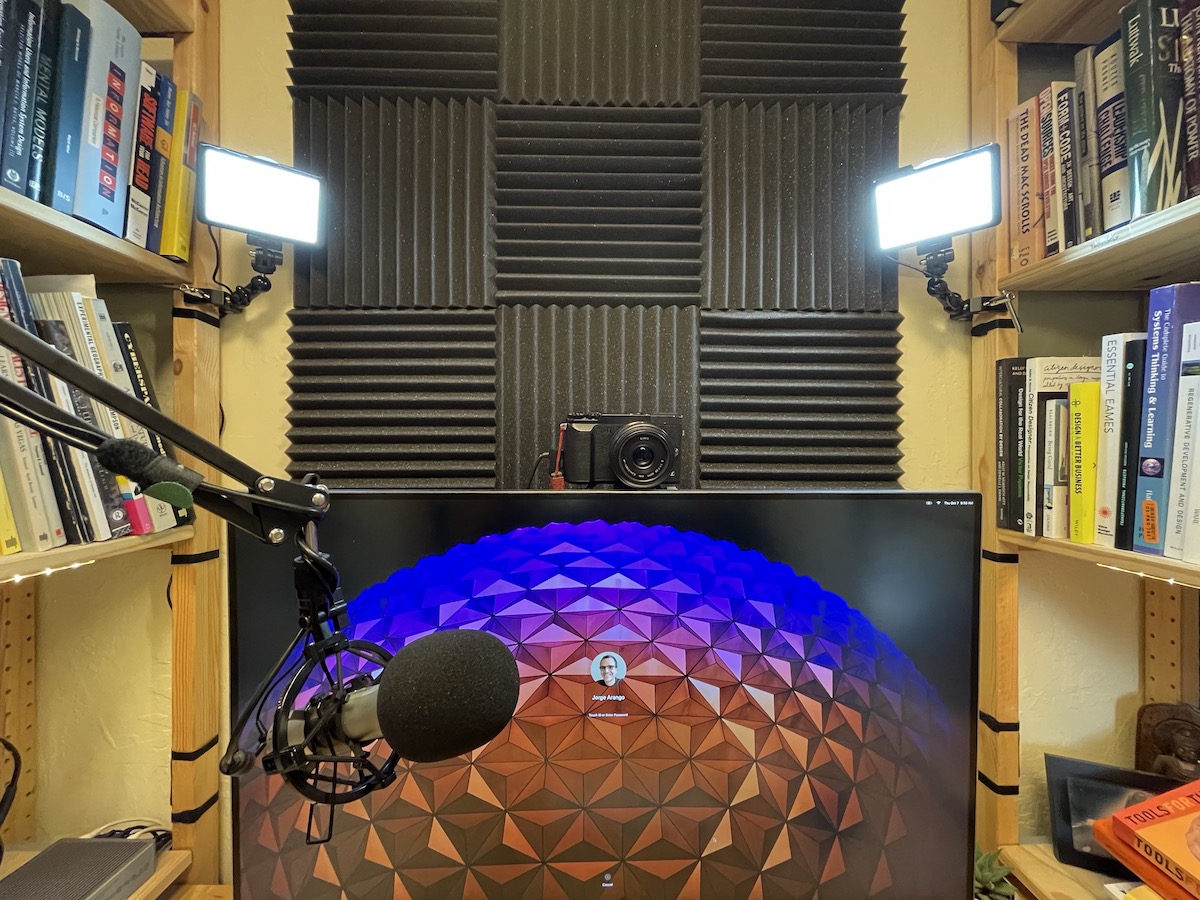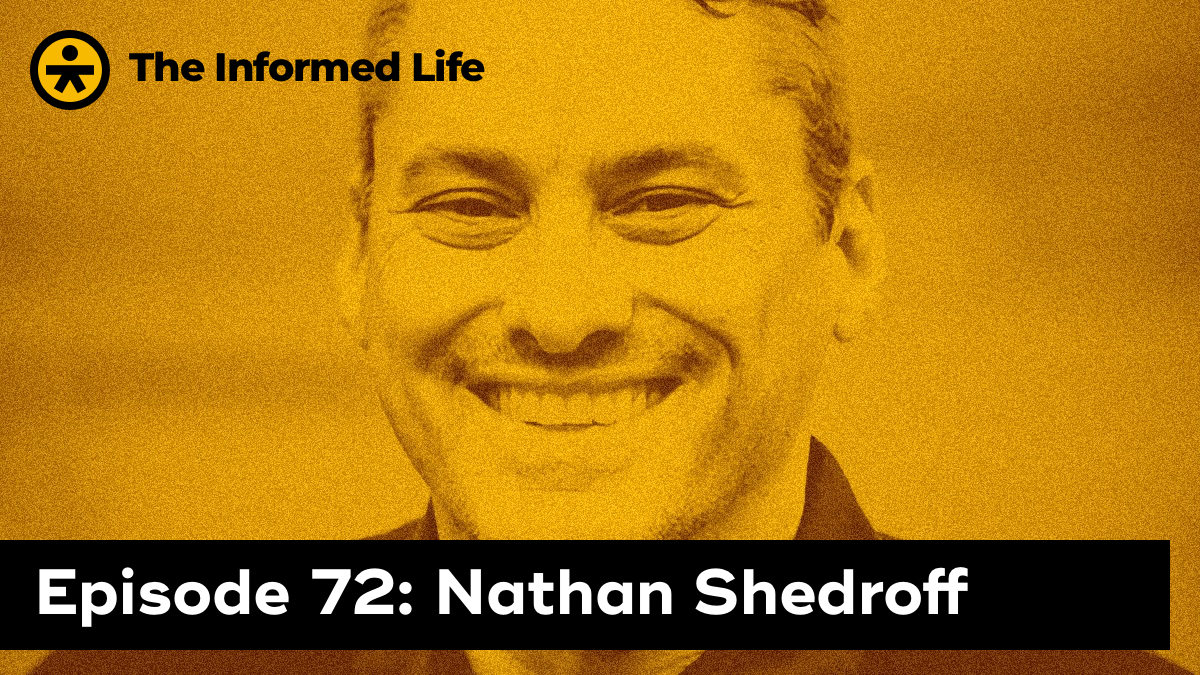
New Website
After several weeks of surprisingly intense work, I finally launched the new Jekyll-powered version of my website last Sunday. I’ve received a few encouraging comments about the new site, especially regarding its speed. It has some new features, but I took a conservative approach to this project. There should be no surprises; essentially, it’s mostly an infrastructure shift.
Two new “features” to look out for: dark mode (for devices that support it) and improved user privacy. Regarding the latter, you'll notice there’s no cookie pop-up; that’s because the site has no third-party services that track users. (I’m using Fathom analytics, which I selected primarily for its privacy-respecting features.)
The part of the process that took the longest was content migration. While WordPress has good export features, they’re not perfect. For one thing, references to images were pointing to the old site’s WordPress.com domain. (Which is different from my domain.)
For another, references to featured images (the ones you see in post lists and cover photos) aren’t exported along with posts. Restoring those connections took a while. (Fortunately, I’m handy with Unix text processing tools. I can’t imagine going through a migration like this one without knowing grep and such.)
I learned a lot during this project and plan to share some of what I learned. This type of move isn’t for everyone; I expect most people are better served by a WordPress or Squarespace website. That said, some of the issues I faced can be mapped to other similar projects.
For now, I’m relieved to have launched and slowly catching up to all the non-client work I put aside while completing the migration. I'll gradually fix the bugs that inevitably arise, so please let me know if you see anything weird with the site. And of course, email me any comments or if there’s anything you’d like to know about the process. Thanks!
From my blog
Why I moved my site to Jekyll
The first post on the website offers details on why I switched from WordPress.
Work and Meta-work
Understanding the difference between doing the work and working on the work can boost your effectiveness.
Book notes: Tools for Thought
An overview of Howard Rheingold's book about the history of computers as tools for mind augmentation.
Sketches as an extension of your mind
Sketches aren't deliverables — they're a means for thinking on paper, where you can work things loosely and quickly.
My videoconferencing setup
I've had many folks ask me about the equipment I use to achieve good video/audio quality in conference calls. I'll send them a link to this post the next time I get the question.

Also worth your attention
The firehose
Benedict Evans on the state of finding content online: “The internet is a firehose. I don’t, myself, have 351 thousand unread emails, but when anyone can publish and connecting and sharing is free and frictionless, then there is always far more than we can possibly read. So how do we engage with that?” (H/t Karl Fast)
Lessons from a vision project
Gerren Lamson on lessons learned from a platform vision product at Indeed. (H/t Kenny Chen)
Is there bias in ontologies?
A key question when designing information systems. (H/t Aaron Bradley)
Software 2.0
“The ‘classical stack’ of Software 1.0 is what we’re all familiar with — it is written in languages such as Python, C++, etc. It consists of explicit instructions to the computer written by a programmer… In contrast, Software 2.0 is written in much more abstract, human unfriendly language, such as the weights of a neural network.” Andrej Karpathy suggests that neural networks represent a fundamental shift in how software is created. (H/t Brian Armstrong)
Problem Framing
“Problem Framing is a design thinking method used to understand, define and prioritize complex business problems.” A guide for running framing workshops. (H/t The Understanding Group)
Fritjof Capra interview
On the occasion of the publication of his new book, Patterns of Connection. (Which I haven't yet read.) Highlight: “In order to understand networks we need to learn to think in patterns and relationships. But this nonlinear way of thinking and acting is something that we are not used to, as most of us have been educated in this nonlinear way. It’s difficult to overcome.”
1987 Apple HIG
A Twitter thread from Andy Matuschak about the 1987 Apple Human Interface Guidelines, which he describes as an “extraordinary read.” (And which I haven't yet read either, but have put on my reading list — Andy helpfully included a link to a PDF in the thread.)
Episode 72 of The Informed Life podcast features a conversation with Nathan Shedroff. Nathan is an entrepreneur, author, speaker, and educator. (He is my colleague at the CCA MDes program.) For a long time, Nathan has worked to drive innovation and sustainability through design.
Our conversation focused on his latest project: Foodicons, “a series of five challenges to develop a shared, open-source, and royalty-free iconographic language of food.” If you are intrigued about design at scale and/or semiotics, this conversation is worth your attention.
The Informed Life episode 72: Nathan Shedroff on Foodicons Design

Parting thought
A map is a pattern made understandable.
— Richard Saul Wurman